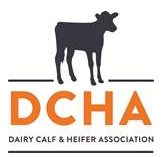
 In a few short weeks, winter will officially arrive - though it may already feel that way, depending on your geography. In naturally ventilated calf barns, cooler weather can tempt calf caregivers to "batten down the hatches," so-to-speak, when it comes to ventilation. However, this can be dangerous to calf respiratory health.
In a few short weeks, winter will officially arrive - though it may already feel that way, depending on your geography. In naturally ventilated calf barns, cooler weather can tempt calf caregivers to "batten down the hatches," so-to-speak, when it comes to ventilation. However, this can be dangerous to calf respiratory health. Ken Nordlund, veterinarian at the University of Wisconsin, is a strong proponent of improving ventilation in individual calf pens in naturally ventilated calf barns. According to an article in the November-December issue of Bovine Veterinarian, Nordlund has observed that individual calf pens in these barns - even well-ventilated structures - can become "badly polluted microenvironments."
In fact, research by Nordlund and colleagues has found that airborne bacteria counts in individual pens inside naturally ventilated barns can be "dramatically higher" than levels elsewhere in the barn. Granted, most of the bacteria species they've isolated are non-pathogenic. However, field studies have shown a relationship between airborne bacteria counts and bovine respiratory disease (BRD) in naturally ventilated barns.
Nordlund has assisted with the design and use of positive-pressure ventilation tubes in naturally ventilated barns. The goal of these systems is to provide a continuous, gentle supply of fresh air to the calf without creating a chilling draft.
Reducing levels of airborne bacteria at calf level is critical in indoor calf barns. It can do a world of good in decreasing the risk of respiratory problems in your calves. To learn more about using positive-pressure ventilation tubes in naturally ventilated barns, read "A breath of fresh air" in the November-December 2013 issue of Bovine Veterinarian. Or, see "Tube ventilation".
11.27.2013